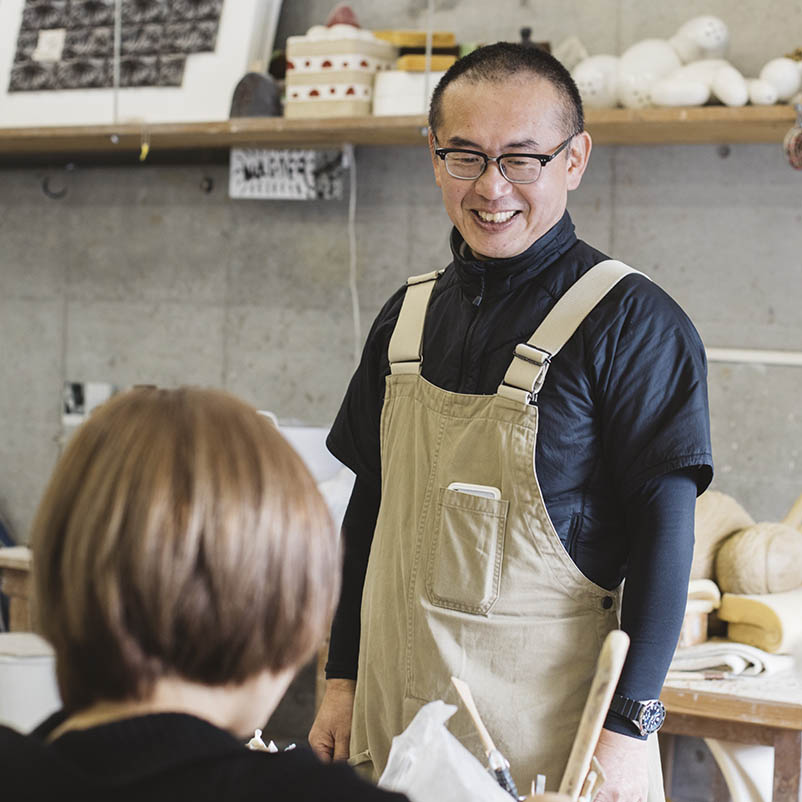
HIROSE Nana
- Specialization
- Contemporary Art / Installation
[Advanced Studio Art 3]
Large pots as tall as 80cm are made using a potter's wheel and fired in the noborigama climbing kiln at Kutsuki Seminar House, one of our off-campus facilities.Participants include students from other years and courses who work together to keep the fire burning for 24 hours.Students learn ancient firing methods and, through their experience, develop stronger bonds with one another.
[Graduation Research Practicum 4]
Students create works to be exhibited at the “Inter-University Ceramic Art Exhibition” held at a gallery on campus.After visiting the venue, they set about creating site-specific work for the gallery.Students also get involved in the planning and organization of artist talks and other ceramics exhibition events.

Students take cross-listed courses at the Faculty of Art to improve their observational, critical thinking, imagination, and other skills needed to build a firm artistic and creative foundation.They also learn the basics across all seven courses and start to explore which fields they would like to pursue.
Students get a feel for handing clay, trying out ceramic forming techniques that include tebineri hand-building techniques and wheel throwing.They also learn about glazing techniques and develop their knowledge of ceramics as well as the histories of arts and crafts and dyeing and weaving.
Students aim to translate their ideas into their work by using the techniques and knowledge they have developed.Each of their projects receives an evaluation, and students learn to view their work objectively.
Students engage in their graduation work, making full use of the skills and expressive vocabulary they have developed over the past four years of study.While discovering their own originality and means of expression, students complete the final work of their student careers.
The kiln area is equipped with gas and electric kilns where students can fire pieces that are even larger than they are.
PICK UP!


Kyoto Seika also has a noborigama climbing kiln at the Kutsuki Seminar House in Shiga Prefecture,where students get hands-on experience during their third year.

Our large wheel room houses 30 electric potter’s wheels, where students have plenty of space to focus on their work.

Studios are divided by year level in the ceramics studio, which is always bustling with students who are hard at work on their latest project.

